Copper Facts
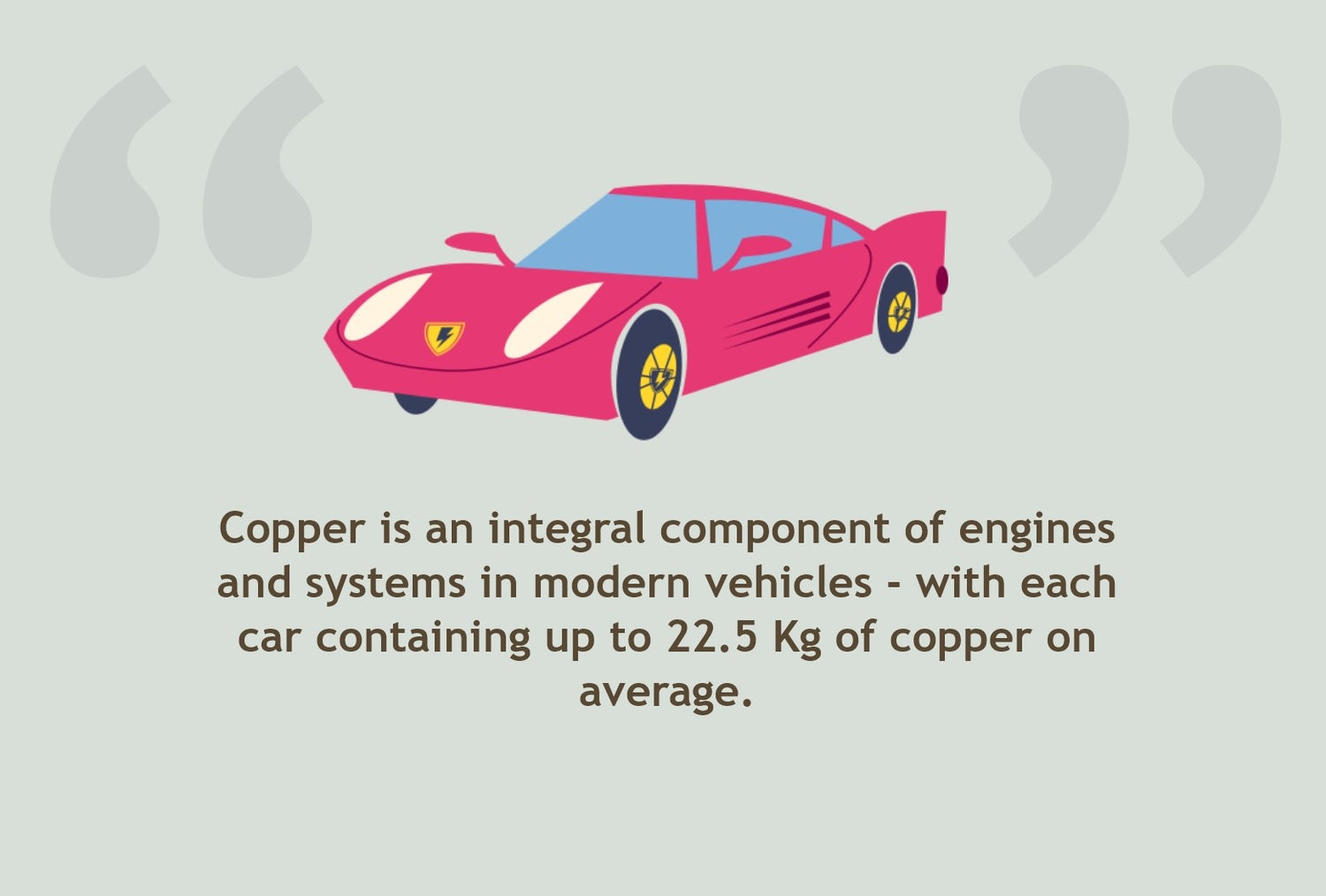
1
COPPER AND CARS
Cars today contain up to 22.5 kg of copper on average. Copper enables intelligent engines and gear management, as well as sensor and entertainment systems.
As cars get increasingly complex and require more power, such as modern electric vehicles, we turn to copper to make up the difference efficiently.
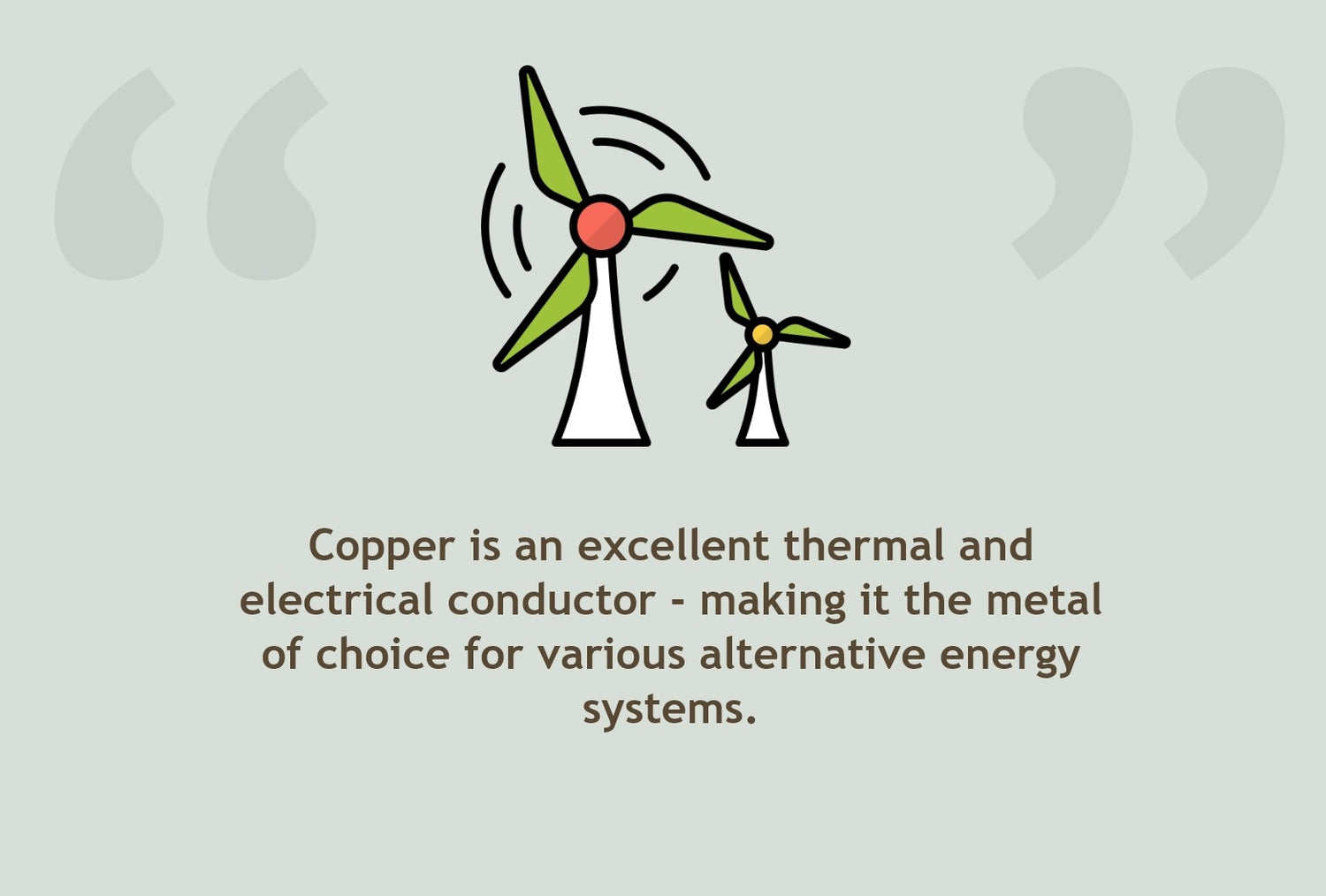
2
COPPER AND RENEWABLE ENERGY
Since Copper is an excellent thermal and electrical conductor among engineering metals, power systems using copper generate and transmit energy with higher efficiency and minimum environmental impact. For example, copper in wind turbines helps cut down on CO2emissions by about 150 times - with up to 30 tonnes used in each turbine.
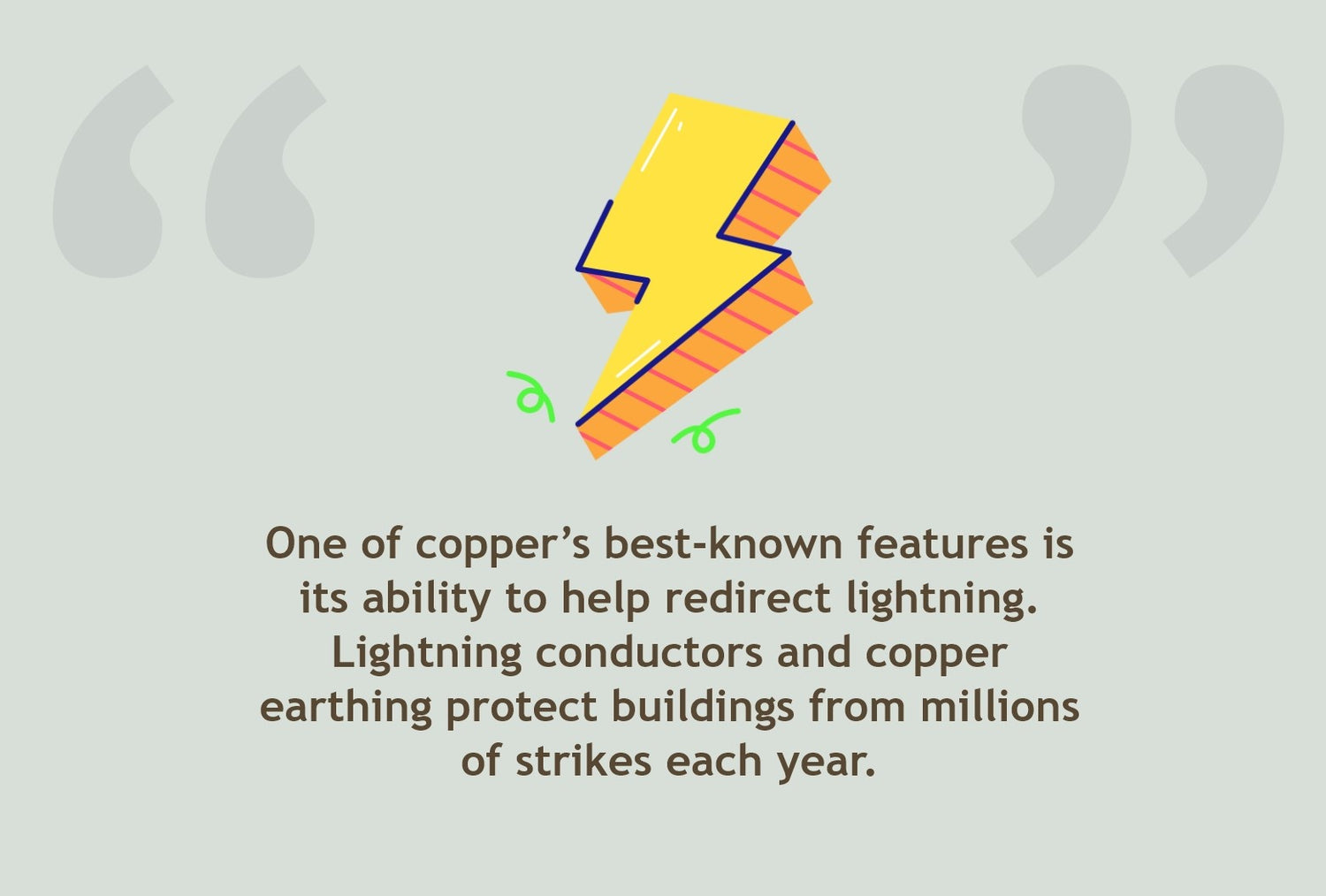
3
COPPER AND LIGHTNING
Lightning strikes are a global phenomenon - as is using copper as protection against them. Lightning conductors work via copper earthing to protect buildings across the world, adding more value to this versatile metal.

4
COPPER AND RADIOACTIVE WASTE
Copper provides exceptional resistance to corrosion, making it a vital protector in many inhospitable environments. Sweden leads the way for long-term nuclear waste handling- with 5 cm thick oxygen-free copper canisters used to keep nuclear fuel isolated from the environment. These canisters need to operate for a hundred thousand years, but have an expected shelf life of 5 times that amount!
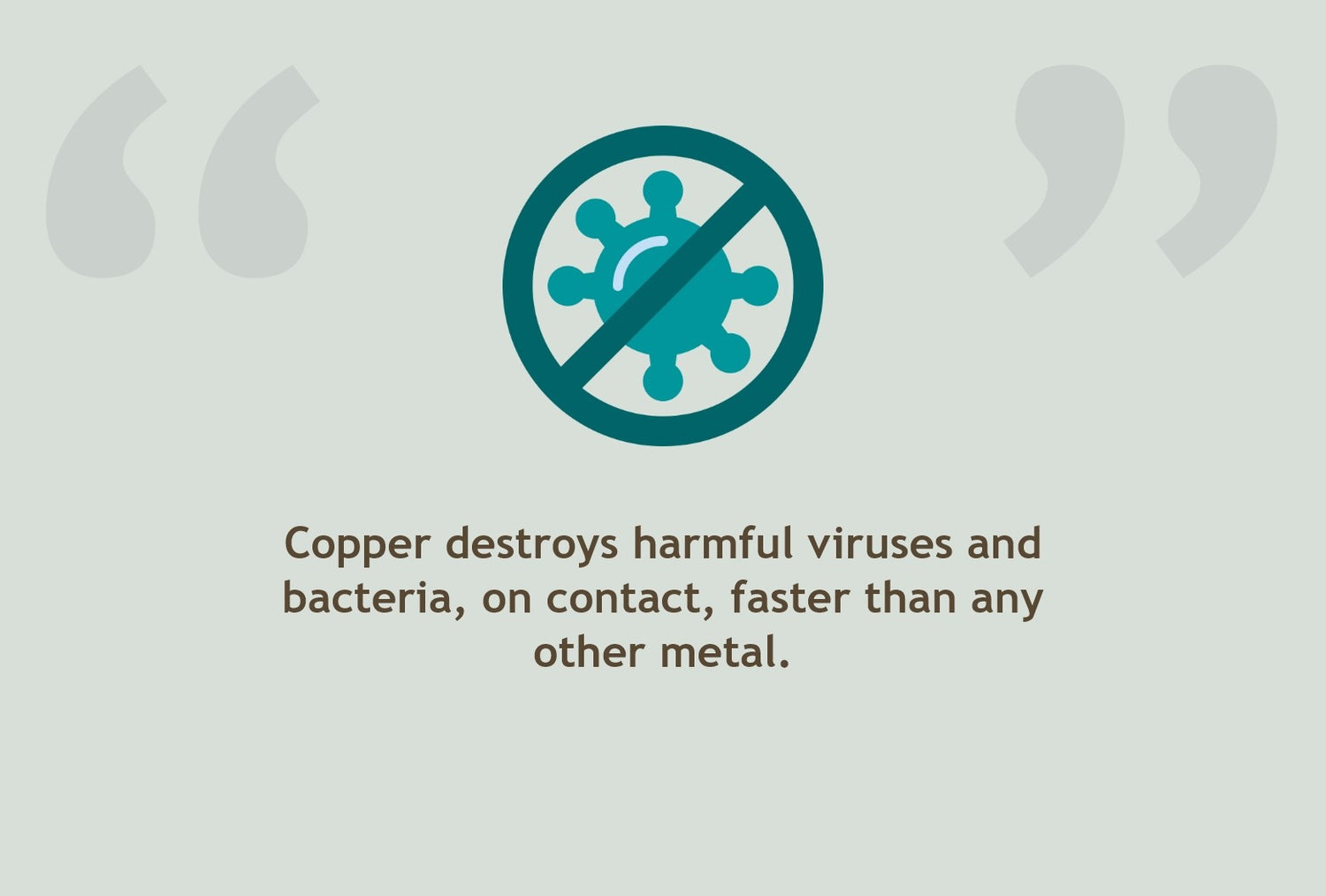
5
COPPER IS ANTIMICROBIAL
Copper's antimicrobial qualities were recognized even by our ancestors, thousands of years ago. Ancient Egyptians, Greeks, Romans and Aztecs used copper compounds to treat different diseases. Persia and India, two bastions of medical science, also saw copper applied for boils, eye infections, and venereal ulcers.

6
COPPER AND RECYCLING
Copper’s ability to be recycled without a loss in durability or performance makes it highly sustainable - with around 50% of Europe's copper demand met by recycled material alone.

7
COPPER AND OUR BODY
Iron, zinc, and copper are three vital minerals for our well-being. Copper plays a significant role in blood vessel formation, having a healthy heart, normal brain development, healthy bones, teeth, and more!
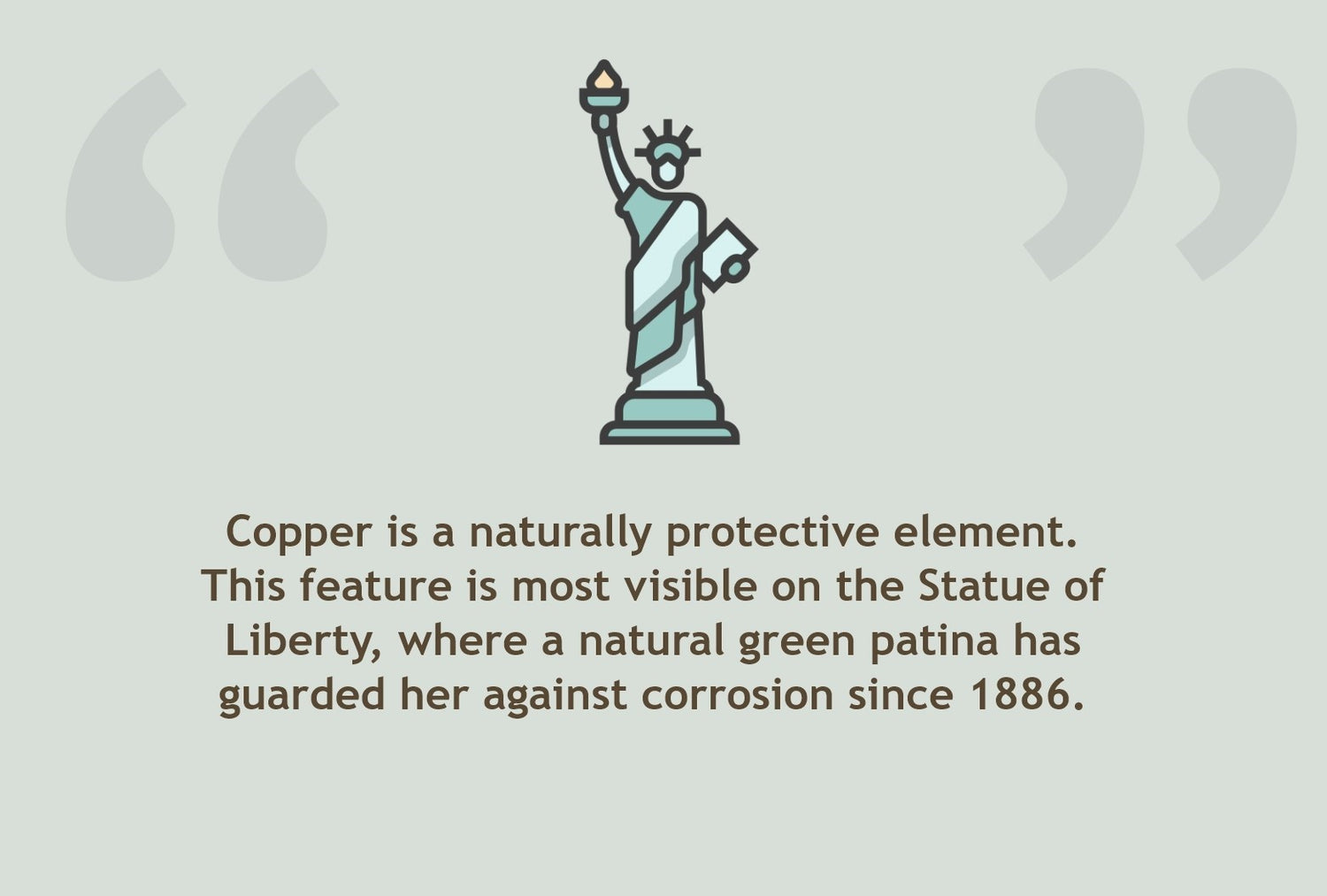
8
COPPER AND THE STATUE OF LIBERTY
The Statue of Liberty contains more than 80 tonnes of copper, mined in Norway and crafted by French artisans. But why copper? The answer- durability. Copper enabled the statue to withstand the salty sea spray and air over its long journey to America, while the natural, green patina has guarded her against corrosion since 1886.
FROM OUR BLOG
-

The Copper Water Routine: A Safe, Simple Mornin...
Alnasir KhanLearn how a pure copper water bottle creates a simple, safe morning ritual. Traditional Ayurvedic practice meets modern wellness for better health everyday.
The Copper Water Routine: A Safe, Simple Mornin...
By Alnasir KhanLearn how a pure copper water bottle creates a simple, safe morning ritual. Traditional Ayurvedic practice meets modern wellness for better health everyday.
Read More -

The Kaarigar Copper Water Bottle for Office & G...
Alnasir KhanDiscover handmade copper water bottles designed for office professionals and fitness enthusiasts. Our Ayurvedic copper bottle range delivers antimicrobial benefits with premium style.
The Kaarigar Copper Water Bottle for Office & G...
By Alnasir KhanDiscover handmade copper water bottles designed for office professionals and fitness enthusiasts. Our Ayurvedic copper bottle range delivers antimicrobial benefits with premium style.
Read More -

Elevate Your Home Bar: Creating an Instagram-Wo...
Alnasir KhanBuild a stunning cocktail station with Moscow mule copper mugs. Discover styling tips and shop 100% pure copper mugs online at Kaarigar Handicrafts today!
Elevate Your Home Bar: Creating an Instagram-Wo...
By Alnasir KhanBuild a stunning cocktail station with Moscow mule copper mugs. Discover styling tips and shop 100% pure copper mugs online at Kaarigar Handicrafts today!
Read More



